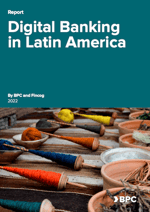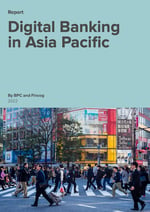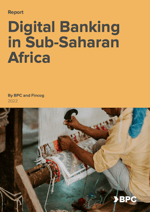- Products
- Services
ATM Acquiring as a Service
Experience seamless, efficient and customizable ATM management
Card Issuing and Management as a Service
End-to-end, secure, and integrative payment solutions
E-commerce as a Service
A white-label, user-friendly platform for secure, versatile payment solutions
BPC Academy
Engaging employees to learn, improve and master BPC solutions
Fraud Management as a Service
Robust fraud detection, risk-based authentication, and multi-institutional security
POS Acquiring as a Service
Streamlining payments and enhancing merchant experiences with seamless solutions
Switch as a Service
Streamlining and securing multi-network transactions while enhancing efficiency
- AI Services
AI Recommendations
Deliver hyper-personalized experiences with BPC AI
AI Virtual Assistant
Operate seamlessly with large data sets, source documents, and generate insightful reports with BPC AI Virtual Assistant.
- Use Cases
Banking
From enabling banks to enabling banking
Neobank
The building blocks for next gen banking delivered today
Microfinance & Inclusion
Global banking fit for local needs
Payment Service Provider
Stack to Service - white label payment excellence
Fintech
More and Better Together
Transport Operator
Mass transit the personal way
Government
Enhancing the real life of citizens
Building Ecosystems
Urban Mobility & Transportation
Mass transit the personal way
National Payment Systems
Connecting payment rails to the last mile
Marketplaces
Creating relevant industry-led ecosystems
- Knowledge Hub
Developers
Integrate our APIs on your apps.
API Documentation
The latest developer docs, including tutorials, sample code, and API reference.
API Status
- Company
Events
- Home
- Banking
- Card Management
- Buy Now Pay Later
- Digital Banking & Super Apps
- Digital Lending
- API Banking
- Merchant Management
- Billing & Invoicing
- Tap-to-Phone
- Risk & Fraud Management
- Egovernment
- eWallet
- Loyalty
- Microfinance
- ATM & Kiosk Management
- Agent Banking
- Merchant Portal
ATM Acquiring as a Service
Experience seamless, efficient and customizable ATM management
Card Issuing and Management as a Service
End-to-end, secure, and integrative payment solutions
E-commerce as a Service
A white-label, user-friendly platform for secure, versatile payment solutions
BPC Academy
Engaging employees to learn, improve and master BPC solutions
Fraud Management as a Service
Robust fraud detection, risk-based authentication, and multi-institutional security
POS Acquiring as a Service
Streamlining payments and enhancing merchant experiences with seamless solutions
Switch as a Service
Streamlining and securing multi-network transactions while enhancing efficiency
- Payments
- Issuing
- Real-Time Payments
- Switch
- Acquiring
- Tap-to-Phone
- QR Payments
- Payment Hub
- Billing & Invoicing
- Risk & Fraud Management
- ACS 3D secure
- E-commerce
- Tippay
- eGovernment
- Automated Fare Collection
- Integration Platform
- Payment Orchestration
AI Recommendations
Deliver hyper-personalized experiences with BPC AI
AI Virtual Assistant
Operate seamlessly with large data sets, source documents, and generate insightful reports with BPC AI Virtual Assistant.
- Commerce
- Buy Now Pay Later
- Tap-to-Phone
- QR Payments
- Tippay
- Shopping Cart
- Merchant App
- Loyalty
- Automated Fare Collection
- Marketplace
- Payment Orchestration
Banking
From enabling banks to enabling banking
Neobank
The building blocks for next gen banking delivered today
Microfinance & Inclusion
Global banking fit for local needs
Payment Service Provider
Stack to Service - white label payment excellence
Fintech
More and Better Together
Transport Operator
Mass transit the personal way
Government
Enhancing the real life of citizens
Building Ecosystems
Urban Mobility & Transportation
Mass transit the personal way
National Payment Systems
Connecting payment rails to the last mile
Marketplaces
Creating relevant industry-led ecosystems
- Services
- Card Management as a Service
- E-commerce as a Service
- Fraud Management as a Service
- Switch as a Service
- ATM Acquiring as a Service
- POS Acquiring as a Service
- BPC Academy
Developers
Integrate our APIs on your apps.
API Documentation
The latest developer docs, including tutorials, sample code, and API reference.
API Status
- AI Services
Events
- Use Cases
- Knowledge Hub
- Company



